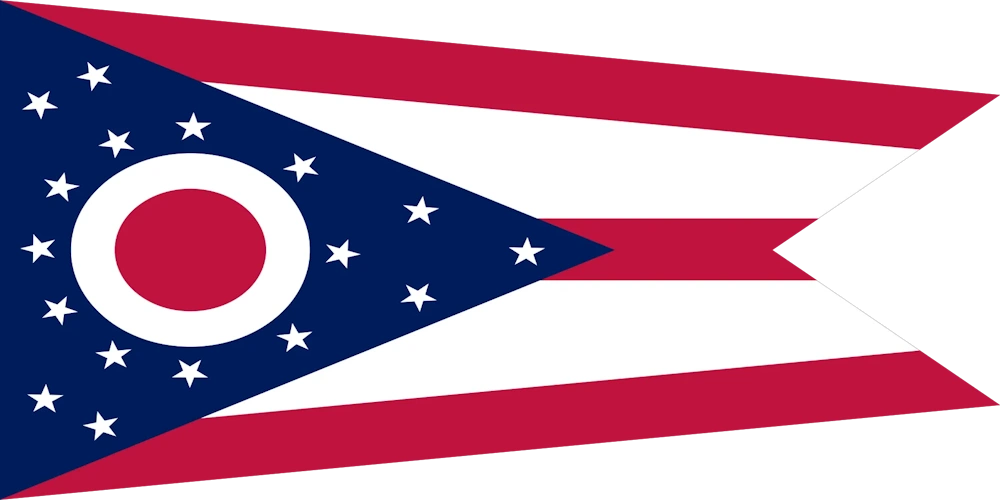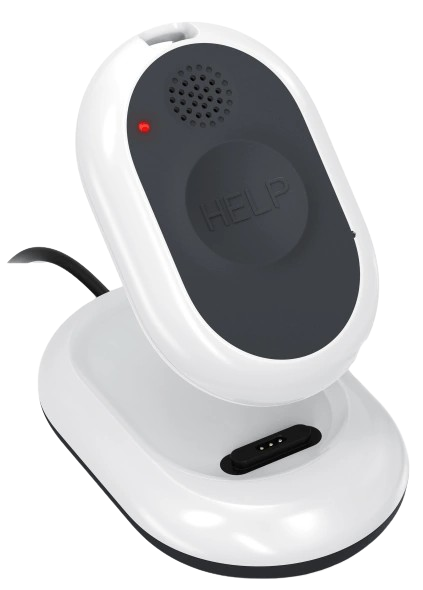In Ohio, lone workers are found in a wide range of industries, from agriculture and construction to healthcare, utilities, and transportation. These workers perform their duties without direct supervision or coworkers nearby, which can make it difficult to summon help during an emergency. Employers in Ohio must be proactive in ensuring the health and safety of these employees through risk assessments, communication protocols, and the implementation of safety technologies.
Ohio does not operate its own OSHA-approved occupational safety and health plan, meaning all workplace safety laws and enforcement in the state fall under federal OSHA (Occupational Safety and Health Administration) jurisdiction. Ohio employers are required to follow all relevant OSHA standards to maintain safe working environments, including when employees work alone.
On This Page
Our Guide To Lone Worker Safety Policy And Legislation In Ohio
Because Ohio is regulated by federal OSHA, employers must adhere to national occupational safety and health standards. OSHA’s General Duty Clause requires all employers to provide a workplace free of known hazards that could cause serious injury or death, including those that apply to workers who are alone.
While OSHA does not have a regulation specifically for lone workers, existing standards—such as those for confined spaces, hazardous chemicals, fall protection, and emergency medical response—often require additional precautions when tasks are carried out by a single worker. These rules apply equally in Ohio.
Employers can seek guidance from OSHA’s Cincinnati, Cleveland, Columbus, and Toledo area offices, which serve various regions throughout the state. These offices provide compliance assistance, training, and support services to help businesses implement effective safety programs.
How Ohio Defines A Lone Worker
Although neither Ohio state law nor federal OSHA explicitly defines “lone worker,” the term generally refers to individuals working without immediate support or supervision. These workers may operate in remote locations, hazardous environments, or during off-hours, and may be at greater risk of injury or delayed emergency response.
Common examples of lone workers in Ohio include:
- Field service technicians and utility workers
- Home healthcare providers and social workers
- Night shift security and janitorial staff
- Agricultural workers and equipment operators
- Delivery drivers and warehouse personnel working during off-peak hours
Employers should identify these roles and assess the unique risks they pose.
Employing A Lone Worker In Ohio
Employers in Ohio are expected to recognize the unique risks that accompany lone work and implement procedures to address them. While there is no singular OSHA regulation for working alone, employers who fail to account for these risks may be found in violation of the General Duty Clause.
Recommended safety measures for managing lone workers include:
- Hazard Assessments: Identify job-specific dangers and environmental risks.
- Emergency Response Plans: Develop procedures for medical incidents, equipment malfunctions, and natural disasters.
- Communication Systems: Equip workers with mobile phones, two-way radios, or lone worker safety apps.
- Scheduled Check-Ins: Require workers to report their status at regular intervals.
- Training and Documentation: Ensure workers are trained and protocols are well-documented and enforced.
By implementing these best practices, Ohio employers can better protect their lone workers and meet OSHA obligations.
Learn How You Can Protect Your Employees With Loneworker.com

With Loneworker.com you can be equipped with the knowledge and the means to protect your employees and protect your business. Contact us today to learn more about how Loneworker.com can protect you and your employees.
How The Safe Lone Worker App Can Protect Ohio Lone Workers And Employers
The Safe Lone Worker app helps reduce risk and improve emergency response times by offering real-time monitoring, panic buttons, check-in features, and location tracking. It is an effective solution for Ohio businesses aiming to safeguard lone employees in sectors such as healthcare, utilities, field services, and logistics.
Whether supporting workers in Cleveland’s healthcare facilities or remote technicians in rural Ohio, the app gives both employers and employees greater peace of mind and accountability.
Ohio Lone Worker Policies
Since Ohio is a federally regulated OSHA state, workplace safety laws are enforced by federal OSHA, and there is no separate state occupational safety and health plan. OSHA does not have a standalone lone worker regulation, but employers are still responsible for protecting employees who work in isolation under the General Duty Clause and relevant safety standards.
This guide is intended as a general reference. For official guidance, employers should consult OSHA.gov or contact a local OSHA office.
Ohio Lone Worker Resources
OHS Contact Centre
- 1-866-415-8690
CDC / NIOSH
- 800-232-4636

Affordable Monitoring For Lone Workers In Ohio

-
 Monitoring Your Employees' Safety
Monitoring Your Employees' Safety
-
 GPS Tracking And Monitoring
GPS Tracking And Monitoring
-
 Man Down Panic Alerts
Man Down Panic Alerts
-
 24/7 Protection Anywhere
24/7 Protection Anywhere
Lone Worker Legislation
Lone Worker Safety Policies And Legislation By State
-
 Alabama State Safety Policies And Legislation
Alabama State Safety Policies And Legislation
-
 Alaska State Safety Policies And Legislation
Alaska State Safety Policies And Legislation
-
 Arizona State Safety Policies And Legislation
Arizona State Safety Policies And Legislation
-
 Arkansas State Safety Policies And Legislation
Arkansas State Safety Policies And Legislation
-
 California State Safety Policies And Legislation
California State Safety Policies And Legislation
-
 Colorado State Safety Policies And Legislation
Colorado State Safety Policies And Legislation
-
 Connecticut State Safety Policies And Legislation
Connecticut State Safety Policies And Legislation
-
 Delaware State Safety Policies And Legislation
Delaware State Safety Policies And Legislation
-
 Florida State Safety Policies And Legislation
Florida State Safety Policies And Legislation
-
 Georgia State Safety Policies And Legislation
Georgia State Safety Policies And Legislation
-
 Hawaii State Safety Policies And Legislation
Hawaii State Safety Policies And Legislation
-
 Idaho State Safety Policies And Legislation
Idaho State Safety Policies And Legislation
-
 Illinois State Safety Policies And Legislation
Illinois State Safety Policies And Legislation
-
 Indiana State Safety Policies And Legislation
Indiana State Safety Policies And Legislation
-
 Iowa State Safety Policies And Legislation
Iowa State Safety Policies And Legislation
-
 Kansas State Safety Policies And Legislation
Kansas State Safety Policies And Legislation
-
 Kentucky State Safety Policies And Legislation
Kentucky State Safety Policies And Legislation
-
 Louisiana State Safety Policies And Legislation
Louisiana State Safety Policies And Legislation
-
 Maine State Safety Policies And Legislation
Maine State Safety Policies And Legislation
-
 Maryland State Safety Policies And Legislation
Maryland State Safety Policies And Legislation
-
 Massachusetts State Safety Policies And Legislation
Massachusetts State Safety Policies And Legislation
-
 Michigan State Safety Policies And Legislation
Michigan State Safety Policies And Legislation
-
 Minnesota State Safety Policies And Legislation
Minnesota State Safety Policies And Legislation
-
 Mississippi State Safety Policies And Legislation
Mississippi State Safety Policies And Legislation
-
 Missouri State Safety Policies And Legislation
Missouri State Safety Policies And Legislation
-
 Montana State Safety Policies And Legislation
Montana State Safety Policies And Legislation
-
 Nebraska State Safety Policies And Legislation
Nebraska State Safety Policies And Legislation
-
 Nevada State Safety Policies And Legislation
Nevada State Safety Policies And Legislation
-
 New Hampshire State Safety Policies And Legislation
New Hampshire State Safety Policies And Legislation
-
 New Jersey State Safety Policies And Legislation
New Jersey State Safety Policies And Legislation
-
 New Mexico State Safety Policies And Legislation
New Mexico State Safety Policies And Legislation
-
 New York State Safety Policies And Legislation
New York State Safety Policies And Legislation
-
 North Carolina State Safety Policies And Legislation
North Carolina State Safety Policies And Legislation
-
 North Dakota State Safety Policies And Legislation
North Dakota State Safety Policies And Legislation
-
 Ohio State Safety Policies And Legislation
Ohio State Safety Policies And Legislation
-
 Oklahoma State Safety Policies And Legislation
Oklahoma State Safety Policies And Legislation
-
 Oregon State Safety Policies And Legislation
Oregon State Safety Policies And Legislation
-
 Pennsylvania State Safety Policies And Legislation
Pennsylvania State Safety Policies And Legislation
-
 Rhode Island State Safety Policies And Legislation
Rhode Island State Safety Policies And Legislation
-
 South Carolina State Safety Policies And Legislation
South Carolina State Safety Policies And Legislation
-
 South Dakota State Safety Policies And Legislation
South Dakota State Safety Policies And Legislation
-
 Tennessee State Safety Policies And Legislation
Tennessee State Safety Policies And Legislation
-
 Texas State Safety Policies And Legislation
Texas State Safety Policies And Legislation
-
 Utah State Safety Policies And Legislation
Utah State Safety Policies And Legislation







